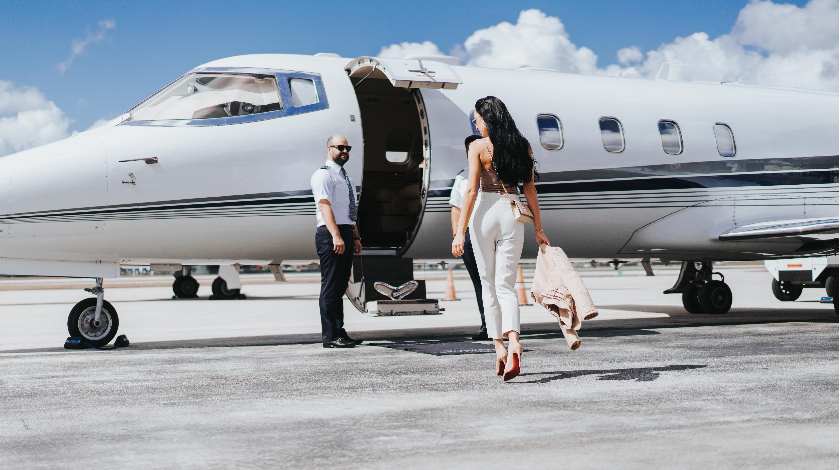Photo: Monarch Air Group
Reading Time: 3 minutesIn a month also marked by Qantas’ record-breaking nonstop flight from New York to Sydney, the plan to build the world’s largest private jet reminds us how the industry is shifting the way we fly.
The race for the world’s biggest private jet just got better. Gulfstream unveiled the G700 in an intent to dethrone Bombardier’s Global 7000, the largest executive jet in the market today. Its debut is projected for 2022 with a starting price of $76 million and a range of 7,500 nautical miles as one of its main traits.
The first customer? Qatar Airways will serve as the launch partner by ordering 10 aircraft for its Qatar Executive charter service.
With a length of 109 feet, 10 inches, the G700 will be 10 feet longer than the G650 and a foot shorter than Bombardier’s Global 7500, but it will have a 2-foot longer cabin (56 feet, 11 inches), a smidge higher height of 6 foot 3 inches and a little more room at the waist: 8 feet, 2 inches.
The news comes just days after Qantas operated the world’s longest registered nonstop flight of almost 20 hours, connecting New York and Sydney in a research flight seeking to discover how the human body will cope, physically and emotionally, with non-stop flights halfway around the globe. Onboard were scientists registering the physical effects on passengers and pilots, with the final objective to tackle the symptoms of jet lag.
Winners of the private jet race
When a new aircraft hits the market, the two instant winners are providers and clients. While manufacturers find new ways to make planes more sustainable, cost-efficient and reliable, private jet providers like Monarch Air Group in Fort Lauderdale will make the latest models available to their clients.
“Whether it’s the G650 today or the G700 tomorrow, the industry wins when new capabilities and technology is injected to the market. We have more solutions to provide and our clients a wider set of options to adapt to their travel needs,” notes David Gitman, President of Monarch Air Group.
In fact, the Gulfstream G650 flew this year from Singapore to Tucson, Arizona, in 15 hours and 23 minutes, establishing a new record for the farthest business jet flight in history. Although still roughly 5 hours short than the longest commercial flight by Qantas, we can only assume that with the current rate of increased performance and fuel efficiency, business aircraft will be able to soon fly 20 or 25 hours nonstop.
From an experience perspective, private aviation will provide more flexibility and comfort in long-haul flights than commercial aviation.
From the inflight service to the flight plan, passengers will decide what they make out of the journey; where to land for refueling and deciding the final destination; for instance, a smaller domestic airport instead of a hectic international terminal. A 20-hour commercial flight can get up to 25 if you consider all the associated hours invested in ground transportation and check-in. In that department, private flight is second to none.
Aviation is changing the way we fly to the point researchers need to gather information on how the human body will cope with record-breaking nonstop flights. As engineering and technology continues to evolve, it will raise the question of whether our mental and physical build is prepared to cope with the advances of the industry.
Flights will ultimately be as long and fast as the human body can withstand.
Established in 2006, Monarch Air Group is a leading provider of on demand private jet charter, aircraft management and long-term aircraft lease. Among Monarch’s customers are Fortune 500 corporations, small and medium size companies, private families, leading entrepreneurs, Government agencies and world leading NGO’s.

